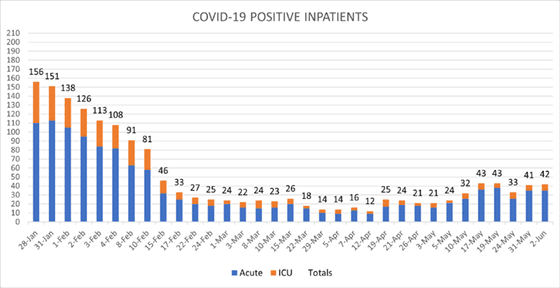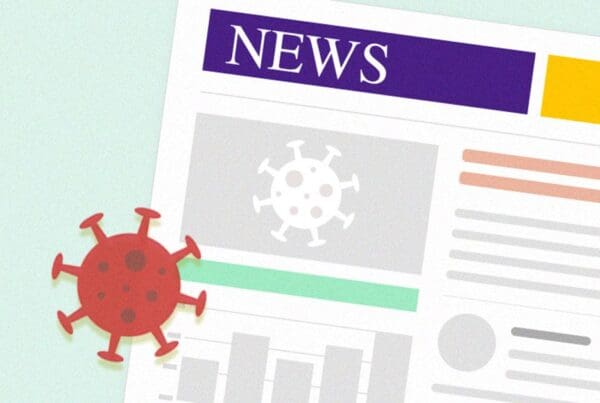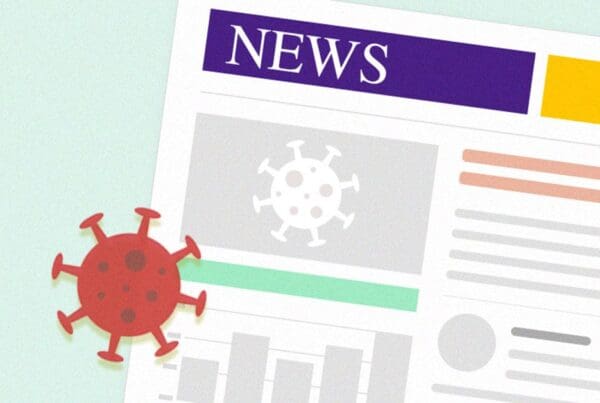QUICK READ:
- King County’s new cases and hospitalization rates are coming down for the first time since the middle of March.
- As we continue to live with COVID-19, it’s important to recognize that we are part of a larger network and that our actions can have an impact on countless other people.
- COVID-19 prevention measures are like speed bumps that enable us to reach our destination safely while reducing the risk to others.
- Thank you to staff, managers, entity leads and vaccination teams for a successful employee booster campaign.
In February, we introduced our COVID-19 vaccine booster campaign, requiring UW Medicine clinical employees to receive a booster shot or complete an online declination process. Thanks to your efforts, we achieved our compliance goals for the campaign. As of mid-May, more than 99% of eligible employees have met the requirement!
We are truly grateful for this outcome and the way our community rallied to achieve these results, especially knowing that only 64% of employees were compliant when we launched the campaign.
To staff: Thank you for prioritizing your health and the safety of our patients through your participation.
To managers and entity leads: Thank you for your diligence in communicating the importance of this work to your teams. We would not be where we are today without everyone’s collaboration.
To the vaccination teams: Thank you for helping to keep us all safe!
Reducing virus transmission in new territory
As of this week, new cases, hospitalization rates and bed occupancies are all coming down for the first time since the middle of March. In fact, across the U.S., case counts are also leveling off and possibly headed downwards.
In recent updates, I’ve mentioned the new planet we’re navigating, where helping to reduce risks of COVID-19 infection will continue to be a responsibility. Vaccination and boosters are a crucial part of this risk mitigation. So is pre-exposure prevention treatment of COVID-19 among patients with moderate to severely compromised immune systems. Since rolling out the therapeutic monoclonal antibody tixagevimab (Evusheld) in January, we have successfully treated more than 700 people, and we continue to monitor equitable distribution through our population health dashboard with ongoing outreach to eligible patients.
Another important part of life on our new planet is embracing the fact that we’re all part of a larger network that connects us to countless other people. This endless and unpredictable interconnectedness can be a difficult concept to grasp. As an example, local skilled nursing facilities continue to regularly experience COVID-19 outbreaks that are due to non-residents working or visiting while infected. In our daily lives, we may feel a great distance from places like these, but the degrees of separation between someone working, living and being exposed to COVID-19 in such a facility is likely much closer than we think it is.
With this reality top of mind, we can continue to help slow transmission of the virus in our community. It may help to think about it like adding speed bumps onto the roads of our new environment. It’s still true that universal masking remains a great way to reduce overall risk. You can follow practices like wearing a mask in a restaurant until you’re sitting down or at a sporting event until you take a snack break. These are just a couple of examples, but everything we do to disrupt this disease makes a difference to those close to us and to those who may be farther away.
UW Medicine COVID-19 Activity Summary

King County: Public Health – Seattle & King County is reporting 433,137 total cases and 2,816 deaths as of Wednesday, June 1. The number of new positive tests over the last seven days is currently at 366.3 per 100,000 people.
Washington: The Department of Health reports 1,583,206 cases and 12,946 deaths as of May 31.
United States: The Centers for Disease Control and Prevention reports 183,383 new cases, 84,176,694 total cases and 1,002,420 deaths as of June 1.
Global: The WHO COVID-19 Dashboard reports 528,275,339 confirmed COVID-19 cases and 6,293,414 deaths as of June 2.
We don’t know exactly how COVID-19 will impact our summer and fall, but we at least can be confident that we are taking the right steps toward protecting ourselves and our patients from the worst outcomes of the illness while also making UW Medicine and our greater community a safer place for all. As the pandemic evolves, our responses and policies will need to change as well. On June 1, thanks to the Supply Chain team, we were able to move from contingency to conventional PPE use. This means that we should be using all PPE as single use for transmission-based precautions (contact, droplet, aerosol, etc.). We are also reviewing required quarantine procedures for employees and will keep everyone up to date on any policy changes that may result.
While we’ve all been through so much over the past two years, I’m truly heartened to see how we, as a community, have adapted to this new and different world. How we’ve learned to navigate through the stormiest weather — and to celebrate progress, even when it feels slow. Thank you again for your participation, your patience and your perseverance.
Sincerely,
John Lynch, MD, MPH
Medical Director, Infection Prevention & Control
Associate Medical Director, Harborview Medical Center
Division of Allergy & Infectious Diseases, UW School of Medicine

